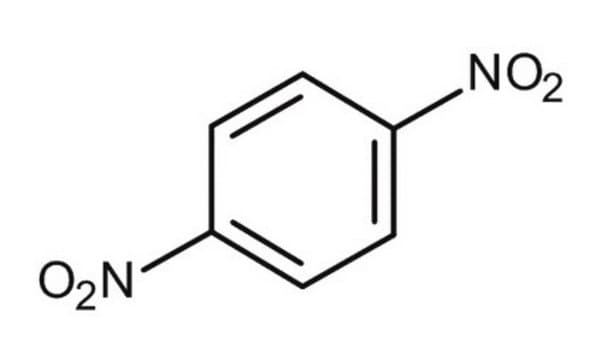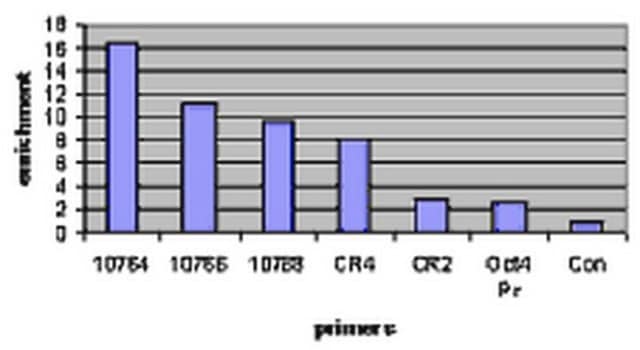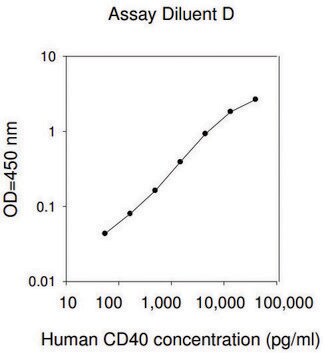442250
1,4-Dinitrobenzene
analytical standard
About This Item
Produits recommandés
Qualité
analytical standard
Conditionnement
ampule of 1000 mg
Technique(s)
HPLC: suitable
gas chromatography (GC): suitable
pb
183.4 °C/34 mmHg (lit.)
Pf
170-173 °C (lit.)
Densité
1.625 g/mL at 25 °C (lit.)
Application(s)
environmental
Format
neat
Température de stockage
room temp
Chaîne SMILES
[O-][N+](=O)c1ccc(cc1)[N+]([O-])=O
InChI
1S/C6H4N2O4/c9-7(10)5-1-2-6(4-3-5)8(11)12/h1-4H
Clé InChI
FYFDQJRXFWGIBS-UHFFFAOYSA-N
Vous recherchez des produits similaires ? Visite Guide de comparaison des produits
Application
Mention d'avertissement
Danger
Mentions de danger
Conseils de prudence
Classification des risques
Acute Tox. 1 Dermal - Acute Tox. 1 Inhalation - Acute Tox. 2 Oral - Aquatic Acute 1 - Aquatic Chronic 1 - STOT RE 2
Code de la classe de stockage
6.1A - Combustible acute toxic Cat. 1 and 2 / very toxic hazardous materials
Classe de danger pour l'eau (WGK)
WGK 3
Point d'éclair (°F)
302.0 °F - closed cup
Point d'éclair (°C)
150 °C - closed cup
Équipement de protection individuelle
Eyeshields, Faceshields, Gloves, type P3 (EN 143) respirator cartridges
Faites votre choix parmi les versions les plus récentes :
Déjà en possession de ce produit ?
Retrouvez la documentation relative aux produits que vous avez récemment achetés dans la Bibliothèque de documents.
Notre équipe de scientifiques dispose d'une expérience dans tous les secteurs de la recherche, notamment en sciences de la vie, science des matériaux, synthèse chimique, chromatographie, analyse et dans de nombreux autres domaines..
Contacter notre Service technique




![[Pd(OAc)2]3 reagent grade, 98%](/deepweb/assets/sigmaaldrich/product/structures/508/249/99a0ef2c-b77c-4d73-8ed9-0cca05b6b41f/640/99a0ef2c-b77c-4d73-8ed9-0cca05b6b41f.png)






